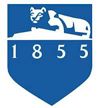White et al., 2014
ARBORTURBATION RATES IN THE APPALACHIAN MOUNTAINS
WHITE, Tim, SHARKEY, Sarah, and DERE, Ashlee L (2014)
GSA Northeastern Section 49th Annual Meeting 23–25 March 2014
-
National, Shale Hills, INVESTIGATOR, STAFF
-
Shale Hills, INVESTIGATOR, COLLABORATOR
Abstract
Arborturbation, or tree throw, the upheaval of soil and sometimes bedrock in the root mass of a fallen tree, is a major process in overturn and downslope transport of soil and shallow bedrock in mountainous regions. Reported here is a quantification of tree throw along a climosequence of 5 sites in the Appalachian Mountains associated with the Susquehanna-Shale Hills Critical Zone Observatory - sites were studied in New York, Pennsylvania, Virginia, Tennessee, and Alabama. The study included field measurements of individual tree throws within a 120-meter diameter search area centered on soil pits on ridges on the Rose Hill Shale and coeval strata of similar composition. The following observations were made for each tree throw observed at each study site: GPS location, tree girth, relative tree age, tree type, dimensions of pit, azimuth of fall, and slope and azimuth of maximum slope. These observations allowed quantification of the volume and distance of transport of sediment per event, and the number of events/area/time.
Slope and prevailing wind direction do not control the majority of arbortubration events in this study. The total number of tree throws decreases while sediment flux by tree throw generally increases from north to south. Larger trees evacuate larger pits, but interestingly there is no observed increase in the average girth of trees to account for the discrepancy between total tree throws and sediment flux. However, the depth to a root limiting layer and distance from the center of a root wad to the center of an excavated pits increases from north to south – deeper roots excavate more soil and deeper soils generally exist in warmer climates.
The measurements of tree throw help to quantify erosion rates. Specifically, the observations verify formulations of sediment flux due to tree throw as presented in Gabet et al. (2003), The effects of bioturbation on soil processes and sediment transport, Annu. Rev. Earth Planet. Sci., 31, 249-73. The sediment fluxes reported here range from 1.8 X 10-5 m2/m/y to 2.1 X 10-4 m2/m/y. The highest values are comparable to sediment flux rates from tree throw reported in the literature whereas the lower values compare well to long-term erosion rates for the Appalachian Mountains determined using cosmogenic radionuclide analyses.
Paper No. 33-5
Presentation Time: 9:25 AM
Session No. 33
S2A. Origin and Evolution of the Appalachian Critical Zone. I. Physical, Chemical, and Biological Processes
Monday, 24 March 2014: 8:00 AM-11:40 AM
Citation
WHITE, Tim, SHARKEY, Sarah, and DERE, Ashlee L (2014): ARBORTURBATION RATES IN THE APPALACHIAN MOUNTAINS. GSA Northeastern Section 49th Annual Meeting 23–25 March 2014.
 This Paper/Book acknowledges NSF CZO grant support.
This Paper/Book acknowledges NSF CZO grant support.
Explore Further



